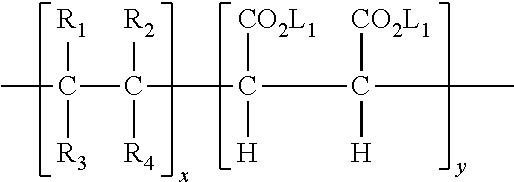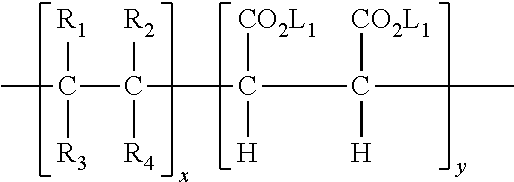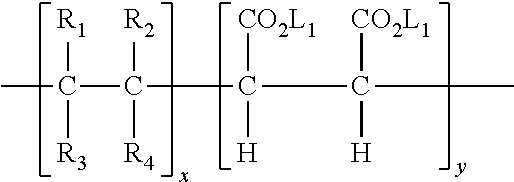Warewashing method using a cleaning composition containing low levels of surfactant
a cleaning composition and surfactant technology, applied in the direction of tableware washing/rinsing machine details, detergent compounding agents, liquid cleaning, etc., can solve the problems of inability to work with built-in rinse components in institutional warewashing processes, long washing time and rinsing time, and the thickness of the rinsewater film. , to achieve the effect of reducing the thickness of the rinsewater film and speeding up the drying of the substra
- Summary
- Abstract
- Description
- Claims
- Application Information
AI Technical Summary
Benefits of technology
Problems solved by technology
Method used
Image
Examples
example 1
[0133]In this example the drying behaviour of various substrates is tested in an institutional single tank warewash machine. A standard institutional wash process is applied for this test with a main wash process containing alkalinity, phosphate and hypochlorite. First (test 1A) the drying behaviour of this process with a standard rinse process is determined. In this standard rinse process a rinse aid is dosed in the separate rinse.
[0134]Then (test 1B) the drying behaviour is determined for a wash process in which no rinse components are present (not dosed via the separate rinse and not added to the main wash process).
[0135]Then (tests 1 C up to 1 G) the drying behaviour is determined for various wash processes in which no rinse component is dosed in the separate rinsed (so rinsed only with fresh water) but where different type of surfactants (or mixtures) are added to the main wash together with the other main wash components. These surfactants are:
[0136]Adekanol B2020 (test 1C)
[01...
example 2
Drying Times Example 2
Average Drying Times
[0190]
Drying times (sec)2 g / l LX + 102 g / l LX +2 g / l LX +ppm Plurafac2 g / l LX20 ppm20 ppmLF303 + 10(no rinsePlurafacPlurafacppm Plurafaccomponent)LF303LF221LF 221blue porcelain80656050plateplastic blue300120120120platelong drink glass300606040plastic cup30010020060
[0191]These results show that, in line with the results from testseries 1A (with another machine and under different conditions), the presence of relatively low levels of certain non-ionics (like in these examples Plurafac LF 303 and Pluarafac LF 221) in the main wash reduces the drying times on various substrates enormously. These levels implicate that the detergent contains about 1 wt-% surfactant.
[0192]Furthermore, these results show that the mixture of LF 303 and LF 221 leads to best drying times, which is better than the average of the 2 separate drying times and better than the drying times of each separate system. These results indicate that improved, synergistic, drying eff...
example 3
[0193]The same machine and test conditions are used as described in example 2, but now attention is paid to visual appearance of the substrates after the drying process. The substrates are assessed visually with a score in the range from 1 (is very poor) to 5 (is very good) on the following aspects:
[0194]A. Filming: here drying pattern and formation of visual layer on the substrate s is evaluated; 1=unequal drying with visual layer on substrates; 5=equal drying and no visual layer on substrate.
[0195]B. Spotting: formation of droplets and stripes are evaluated after drying; 1=many drops and stripes; 5=perfectly dried with no drops and stripes.
[0196]By this evaluation of the visual appearance, the areas in contact with the rack, the edge of the plates, and the inside of the glasses and the cups are not considered. The wash cycle is repeated and the visual appearance assessments is done a second time with the same substrates and without adding any chemicals and the average values are c...
PUM
| Property | Measurement | Unit |
|---|---|---|
| Constant temperature | aaaaa | aaaaa |
| Temperature | aaaaa | aaaaa |
| Temperature | aaaaa | aaaaa |
Abstract
Description
Claims
Application Information
 Login to View More
Login to View More - R&D
- Intellectual Property
- Life Sciences
- Materials
- Tech Scout
- Unparalleled Data Quality
- Higher Quality Content
- 60% Fewer Hallucinations
Browse by: Latest US Patents, China's latest patents, Technical Efficacy Thesaurus, Application Domain, Technology Topic, Popular Technical Reports.
© 2025 PatSnap. All rights reserved.Legal|Privacy policy|Modern Slavery Act Transparency Statement|Sitemap|About US| Contact US: help@patsnap.com



